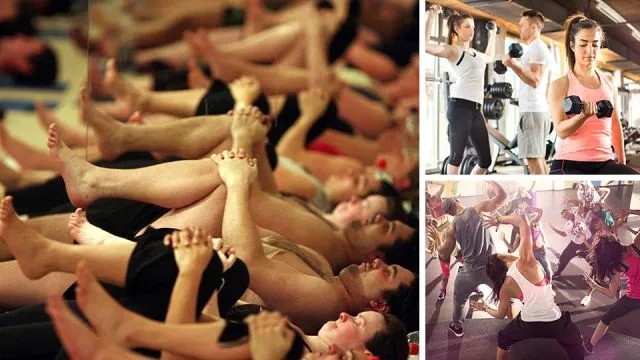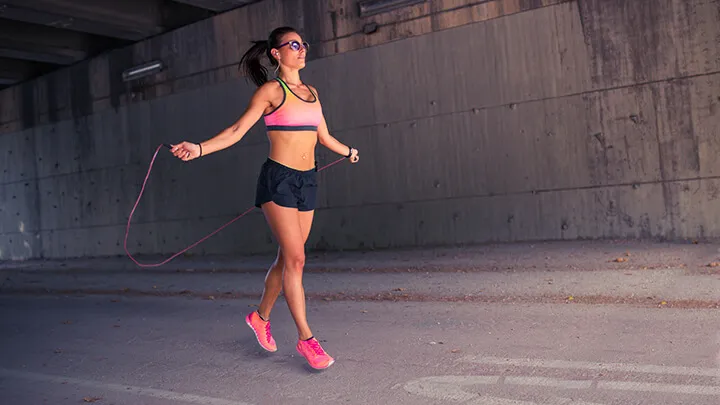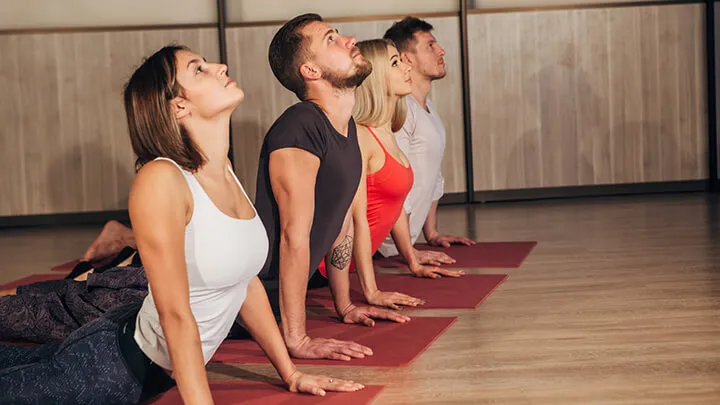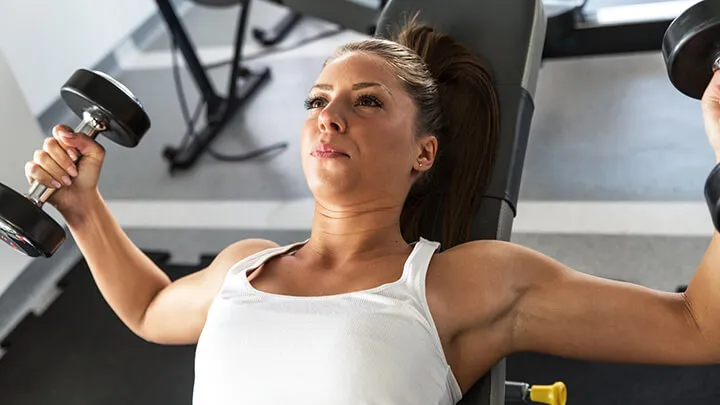
- Share on Facebook15
- Share on Pinterest
- Share on Twitter
Circuit training. Strength training. Crossfit. Zumba. Plyometrics. Yoga. Hot yoga. Marathon training. The list goes on and on. These days, the options for exercise are as abundant as an all-you-can-eat buffet — which, for some of us, is the reason we are exercising in the first place. Unfortunately, with so many different styles to choose from, how do you know which is best for your fitness goals? With busy schedules, balancing work and family life, and the endless variety of shows available on Netflix, it can be a challenge squeezing exercise into our lives — so it’s important to maximize our time spent in the gym.
Benefits of a high-intensity workout

The biggest factor for determining what makes an exercise deemed high intensity is how elevated your heart rate is while performing the activity. While many people assume that the higher their heart rate is, the harder they’re working, it’s important not to let things get too elevated.
A great indicator to determine your maximum heart rate is to subtract your age from 220. So, a 40-year-old woman would want a maximum heart rate of 180 beats per minute (bpm). Exercises such as jumping rope, sprinting, burpees and jumping jacks are considered more high intensity, as they can raise your heart rate to 75 percent or more of your maximum rate. As a result, they are believed to raise your metabolism and burn more calories — sometimes up to nine times more!
Plus, the benefits can last beyond your workout. Post-high intensity training, your body’s metabolism can continue to burn calories — even hours later — through a process known as Excess Post-Exercise Oxygen Consumption (EPOC). EPOC is the amount of oxygen required to get your body back to its normal levels of metabolic function. This “afterburn” effect can last anywhere from 16 to 24 hours after completing a high-intensity workout, meaning you can reap even more of a caloric burn.
High-intensity workouts are also favored by those who are short on time or do not have access to a gym or equipment. Many exercises can be done using your own body weight and through circuit training or HIIT (high-intensity interval training). HIIT workouts use a formula of performing movements at full exertion, followed by a shortened recovery period, usually in a 2:1 ratio. So, sprinting for 30-seconds, followed by 15-seconds of brisk walking. This type of training will increase your endurance and energy levels over time (especially when performing more low-intensity exercises) as well as your body’s ability to use oxygen as energy (known as VO2 max).
Now, this is not necessarily a one-size-fits-all form of exercise. For example, the older you get, the lower your maximum heart rate should be, so this type of exercise should be performed with caution for older individuals. Additionally, because of the intensity, your body needs up to 48 hours after a high-intensity workout to recover. Beginners should start with no more than two to three high-intensity sessions per week to prevent injury or exhaustion.
Benefits of a low-intensity workout

It’s easy to assume that after reading the benefits of high-intensity exercise, there would be no point in performing anything else. However, while the idea of walking on a treadmill might not sound very exciting, there are numerous health benefits that should be considered.
Low-intensity steady state (LISS) requires the body to work for a longer period of time — at least 20 minutes, sometimes up to 60 — with a target heart rate of 60 percent of your maximum. Known as the “fat burning zone,” fans of LISS argue that working out at this pace allows for more oxygen delivery within the cells and increased blood flow, both of which can contribute to caloric burn. It is also a much safer form of exercise for older men and women given that it does not put as much of a strain on the cardiovascular system. In fact, low-intensity exercise can help to lower the risk of cardiovascular disease through regulating plasma lipids, which decrease cholesterol levels.
Low-intensity exercises can take the form of anything from walking or jogging to yoga and cycling. Even some exercises that are considered more high intensity, such as jumping rope, can be dialed down to a lower intensity if performed at a slower, easier pace.
A good baseline for determining the intensity of an exercise is to try and carry on a conversation while performing it. For example, if you are briskly walking with a companion and are able to converse at a normal, easy level, then the exercise can be considered low intensity. If while doing the same exercise you can carry on a conversation but are feeling at times a slightly elevated heart rate or occasionally out of breath, it would be a moderate form. High intensity would involve not being able to say more than a few words, if that, without being completely exhausted.
Low-intensity exercises are favored for being easier on the muscles and requiring less time to recover. Plus, not everyone wants to work out to the point of being completely drenched in sweat. Much like HIIT, there are numerous equipment-free and bodyweight exercises that can be employed to perform lower intensity exercises — even if it takes slightly longer to burn the same amount of calories as one would performing a higher intensity workout. LISS exercisers are prone to sticking with their routine for longer than those who engage in more intense physical activity, which could yield more successful results overall.
For best results, have a combination of both

In conclusion, the best form of exercise is varied based on the individual and their overall fitness goals. A good rule of thumb would be to have a combination of both higher and lower intensity workouts each week, giving the body sufficient time to recover in between. Additionally, strength training routines are a great combination of both forms of intensity, and allow the body to both burn fat and build muscle.
At the end of the day, the best form of exercise for you is the one that has the most staying power, so if you find an activity that you enjoy — whether it’s walking or Crossfit — then you’ve found the one.
— Megan Harris
- Share on Facebook15
- Share on Pinterest
- Share on Twitter

